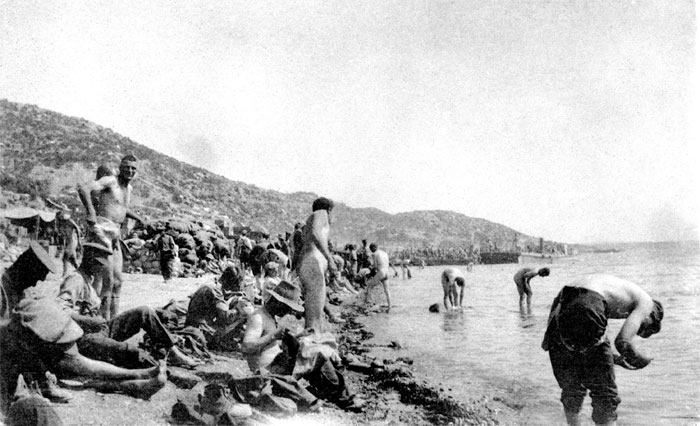Lance Chad, Tjyllyungoo, a Nyoongar Aborigine artist, exhibiting in Perth’s Western Australian Art Gallery, reminds us of our vital spiritual and literal connections to County and Land. We all belong somewhere, and the underpinning natural landscapes that have sustained generations of humans, animals and plants are ever more vital to us all. Lance Chadd’s art is a wonderful tonic and incentive to think and, ideally, celebrate our world.
Read MoreWestern Australia
Art, Science and Politics equal Western Australian Beauty /
Western Australian artist, Philippa Nikulinsky, is not only a superb botanical artist, but allies science, dedicated field observations and enormous skill to a passion for celebrating all the ecosystems of Western Australia. Her long years of art-making allow her to record the ever-changing landscapes, flora and fauna in a fashion that goes beyond environmental issues and political concerns, ultimately to achieve an incredible body of beautiful work that enriches Australia.
Read MoreHow to Translate Travel into Art /
When you travel to a country so entirely new, different and utterly amazing, how does one even start to translate those experiences into art? This is the conundrum with which I am grappling after a recent trip to Western Australia.
Read MoreThe Art of Facing Extreme Danger - Gallipoli, 1915. Part 2 /
Along with A squadron, 10th Light Horse Regiment, Frank Anderson was shifted to Walkers Ridge, ("our new position is called Anzac") in early June. Water had to be fetched from 1/2 mile away and fireward very scarce. No mail either. "Wild rumours of every description. We don't even know the truth of our own position."
Despite being able to swim in the very cold water of the nearby bay, he reported catching his first lice, and being unable to sleep because of the extreme cold. By 18th June, the lice were "breeding in the most alarming manner.", while shell fire and shrapenel caused continual casualties, even down on the beach and in the water, where Frank had "a narrow escape" in one attack.
Long bombardments in the trenches killed more and gave everyone very "disturbed nights", in the great heat of mid-summer. "Water is getting terribly scarce and flies are awful." The food too became a great problem, with little fresh meat. Many men were constantly suffering from dysentery.
The war grinds on, with Frank having dysentery or food poisoning, busy plotting plans of the Australian positions, spending 24 hour stints in the trenches followed immediately by 24 hour stints sapping, By 7th July, "it has been ascertained that the Turks have got a supply of gases but we all have respirators and fear them not. Had charge of our section of trenches as Mr. Rowan (Frank's senior) is not well enough. The night was a very nervous one, and an expected attack did not come off." Next day, "there is a report about that cholera has broken out in the Turkish lines so every care is being taken here. Evidently the Turks have brought up some guns from Achi-baba and are giving us the advantage of them."
On 9th July, while in the trenches for 24 hours, "at 6 p.m. received instructions to proceed with Mr. Jackson to take accurate bearings of Snipers Ridge, for the use of the naval authorities. It was most risky work and we both narrowly escaped being sniped. The way our orderly room mutilates their messages is awful." On 10th July, "tried to have a swim but the snipers successfully kept everyone out of the water. The weather is getting hot again and as soon as Achi-baba is settled the better, as there is a tremendous lot of sickness." Cholera had indeed broken out among the Turks, so everyone was inoculated and felt very sore, compounding the sleepless nights waiting for attacks that did not materialise. Meanwhile, "our trench is almost untenable" with even the flies preventing any sleep.
By 20th July, "Mr. Rowan told me that the Turks had received 100,000 reinforcements and that a concerted attack on our position was likely to take place any night. We are making great preparations for defence.. It is expected they will use gas & liquid fire. Pleasant things to look forward to." Next morning, "came out of the trenches very tired, and we were busy all day with one thing or another. As soon as it became dark, I went out with 20 men and erected entanglements in front of our trenches finishing at 3 a.m." The attack did not take place the following day but everyone was so "on the qui vive that we'll all be knocked out for want of sleep.The work in the trenches was most nerve-racking, and greater portion of the night was spent clearing scrub for a good field of fire" - all while Frank was coping with serious dysentery.
By 29th July, "Absolutely nothing doing and am developing beastly liver. Everything gets on my nerves."
By the end of July, Frank was sent to estimate the number of men needed in their new trenches at Russells Top and to "make a sketch of our position, which is an awful one, the stench being awful." "Our new position is a perfect cow, plenty of bombs and dead Turks. We relieved the N(ew) Z(ealanders) in the firing line. 3 casualties." 1st August - "Very weary day in the trenches and we were most thankful to be relieved."
(Frank Anderson's account of his war experiences in 1915 as an Anzac fighting in Gallipoli will continue in Part 3, the next post in this blog.)


